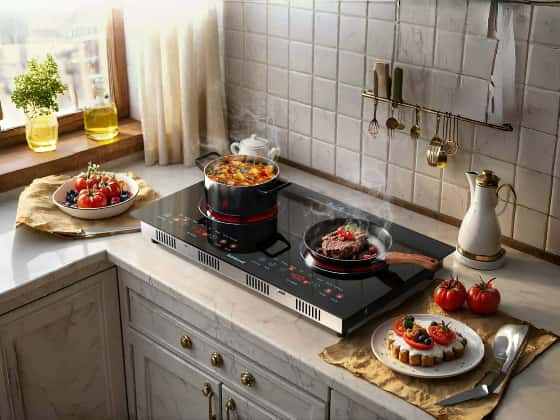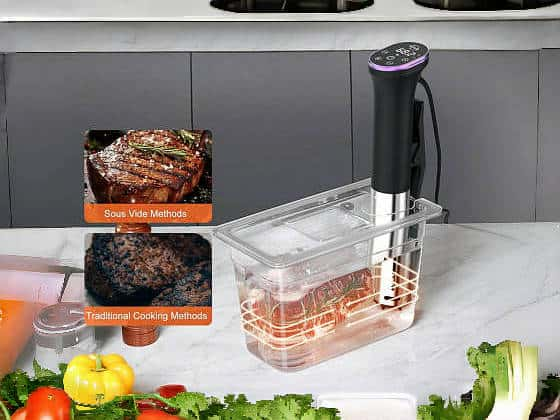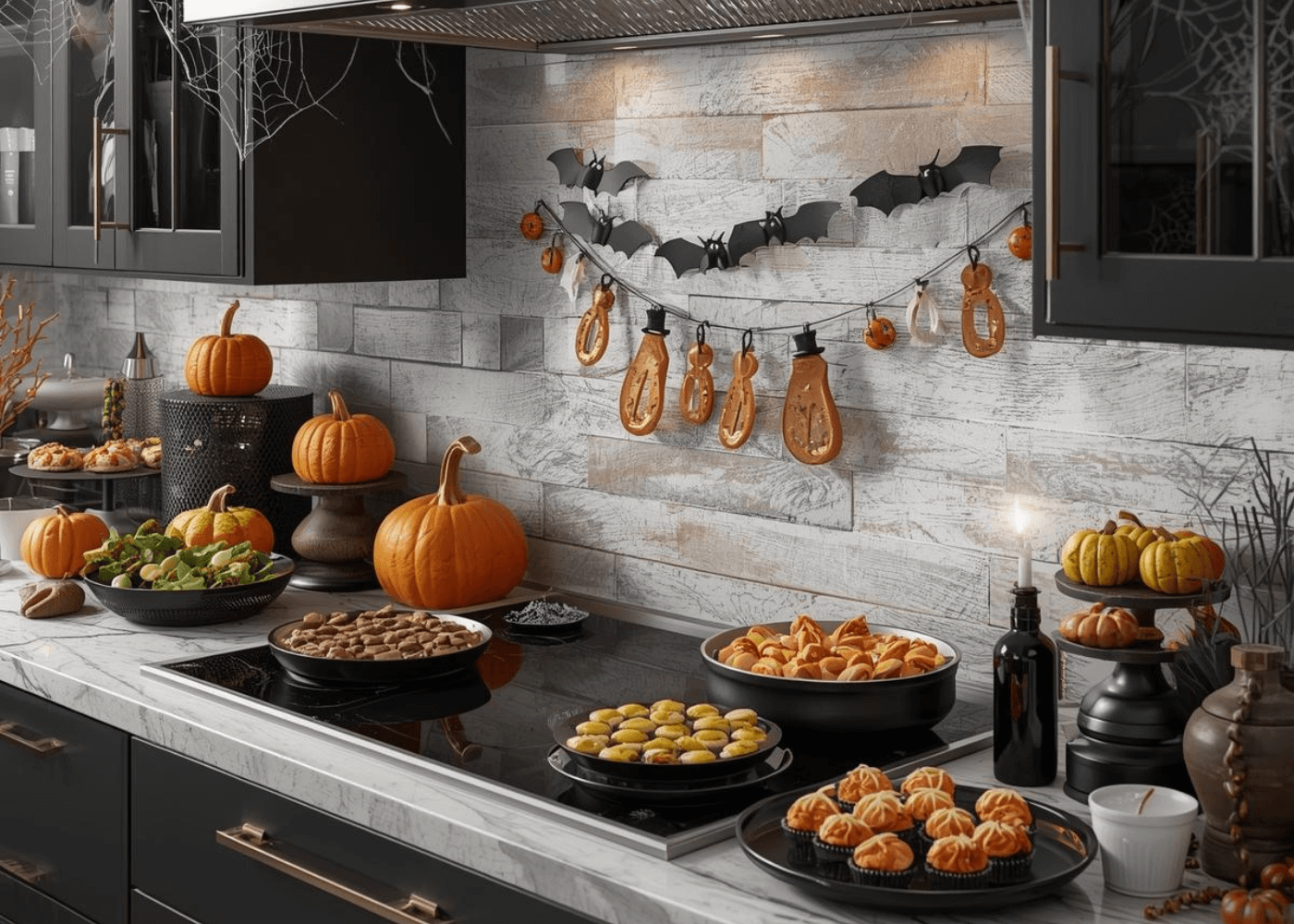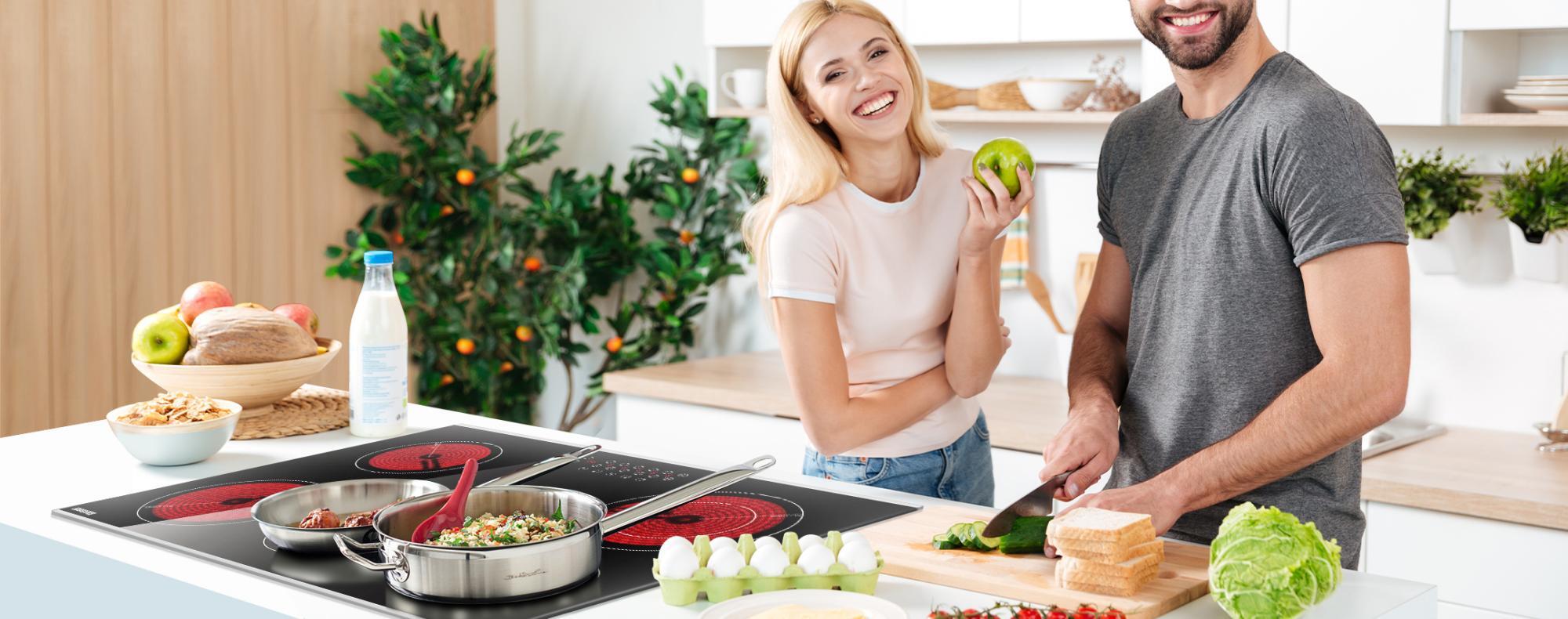
Are you thinking about getting a new cooktop to make your kitchen look better? If you are switching from coil to induction or just replacing an old gas model, one thing is very important: getting the measurements right. If you make a mistake here, you might have to pay a lot of money to change your countertop or even send your new appliance back.
Don't worry! It is easy to measure for a new cooktop yourself. Use a tape measure and this easy, foolproof guide to make sure everything fits perfectly.
Step 1: Turn Off the Power for Safety!
Before you do anything, cut off the power to your current cooktop at the circuit breaker. This is a safety measure that can't be changed. Turn off the gas supply valve for gas cooktops.
Step 2: The Three Most Important Measurements You Need
You need to measure three things: the cutout (or opening), the overall size, and the depth of the countertop.
1. The size of the cutout (the most important part!)
This is the exact size of the hole in your counter. This hole is where the new cooktop will fit. Its lip will rest on the countertop to hide the edges.
To measure, use your tape measure to find the opening's length and width. Don't measure the bottom; measure the top instead. Be exact to the nearest millimeter or 1/16th of an inch.
Pro Tip: Measure both the length and width in at least two places, since openings can sometimes be a little uneven. To be safe, use the smallest measurement you get.
2. The General Dimensions
This is the cooktop's overall width and length measured from edge to edge. This measurement guarantees that the cutout will be sufficiently covered by the cooktop.
Measurement instructions: Lay your tape measure across the top of the current cooktop. The cutout size should be smaller than this dimension.
3. The thickness of the countertop
The typical countertop thickness for modern cooktops is 1.5 inches (3.8 cm). To make sure the new cooktop can fit your countertop, you should check its specifications if it is particularly thick or thin (such as certain types of stone or tile).
How to measure: Check your countertop's thickness at the cutout's edge.
Step 3: Remember the "Hidden" Details
A successful installation involves more than just the physical space:
Verify the Model Number: Attempt to locate the model number of your existing cooktop, which is typically located beneath the burners or on a sticker inside the door of a lower drawer. You can find the precise cutout dimensions by doing a quick web search for its specifications, which is a great way to double-check your own measurements.
Clearance Requirements: Consult your new countertop's installation manual. In order to guarantee adequate ventilation and safety, it will outline the necessary clearances to adjacent cabinets and walls.
A Handy Measurement Cheat Sheet:
| Measurement | What It Is | Why It Matters |
|---|---|---|
| Cutout Width | Width of the hole in the countertop | Must match the new cooktop's required cutout size exactly. |
| Cutout Length | Length of the hole in the countertop | Must match the new cooktop's required cutout size exactly. |
| Overall Width | Total width of the appliance | Ensures it properly overlaps and sits on the countertop. |
| Countertop Thickness | Thickness of your countertop material | Confirms the mounting clips will engage proper |
One last piece of advice:
Order once, measure twice! Nothing is more annoying than having to deal with a return. You will save time, money, and stress by taking five extra minutes to be exact, and you will be one step closer to enjoying your gorgeous new kitchen centerpiece.
Do you need help measuring or selecting the best cooktop? Please leave a comment below; We're be pleased to assist.










